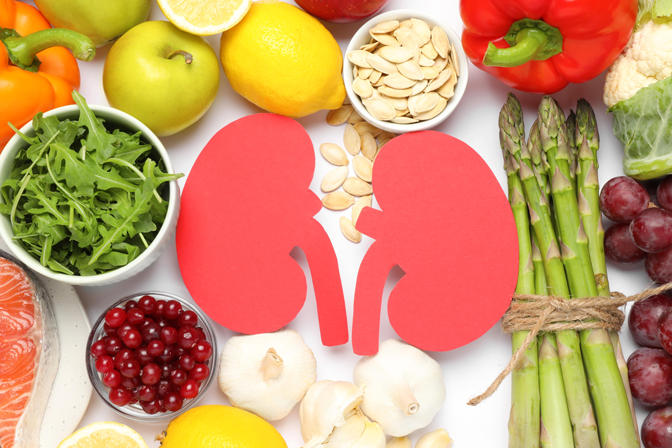
Nature's Design: Fruits That Mirror and Benefit Human Organs
Share
Throughout history, the "Doctrine of Signatures" has suggested that the physical characteristics of natural objects, particularly plants and fruits, indicate their therapeutic benefits to corresponding human organs. While modern science doesn't fully endorse this doctrine, it's fascinating to observe how certain fruits resemble specific body parts and, coincidentally, offer health benefits to those very organs. This article delves into various fruits, highlighting their anatomical resemblances and the health advantages they provide.
Carrots and Eyes
When you slice a carrot crosswise, the internal pattern mirrors the human eye, complete with a pupil and radiating lines resembling the iris. Carrots are rich in beta-carotene, a precursor to vitamin A, essential for maintaining healthy vision. Regular consumption of carrots can reduce the risk of macular degeneration and cataracts, promoting overall eye health.
Tomatoes and the Heart
A halved tomato reveals multiple chambers, reminiscent of the heart's structure. Tomatoes are abundant in lycopene, an antioxidant linked to reduced risks of heart disease and certain cancers. Additionally, they provide potassium and folate, nutrients that support heart health by aiding in blood pressure regulation and reducing homocysteine levels.
Walnuts and the Brain
The wrinkled appearance of a walnut bears a striking resemblance to the human brain, complete with left and right hemispheres. Walnuts are a rich source of omega-3 fatty acids, which are vital for cognitive function and brain health. They also contain antioxidants that combat oxidative stress, potentially enhancing memory and reducing the risk of neurodegenerative diseases.
Kidney Beans and Kidneys
Kidney beans are aptly named due to their shape, which mirrors human kidneys. These legumes are high in fiber, aiding in blood sugar regulation and reducing the risk of kidney stones. Their low glycemic index makes them beneficial for kidney health, especially in individuals managing diabetes.
Celery and Bones
Long stalks of celery resemble the structure of bones. Celery is a good source of silicon, which contributes to bone strength, and vitamin K, essential for bone mineralization. Interestingly, bones contain 23% sodium, and so does celery, highlighting a unique correlation.
Avocados and the Uterus
The shape of an avocado resembles a uterus, and it takes approximately nine months for an avocado to grow from blossom to ripened fruit. Avocados are rich in folate, a B-vitamin crucial for reproductive health. Adequate folate intake reduces the risk of cervical dysplasia and supports fetal development during pregnancy.
Figs and Testicles
Figs grow in pairs and have a shape reminiscent of testicles. They are rich in antioxidants and have been traditionally considered to enhance male fertility. Figs contain zinc and other minerals that contribute to sperm health and motility.
Sweet Potatoes and the Pancreas
The elongated shape of a sweet potato resembles the pancreas. Sweet potatoes have a low glycemic index, meaning they release sugar slowly into the bloodstream, aiding in blood sugar regulation. This property supports pancreatic health by reducing the strain on insulin production.
Olives and Ovaries
Olives bear a resemblance to ovaries and are beneficial for women's health. They are rich in healthy fats and antioxidants, which help reduce inflammation and may lower the risk of ovarian diseases. Regular consumption of olives supports overall reproductive health.
Grapes and Alveoli
A cluster of grapes resembles the alveoli in the lungs. Grapes contain antioxidants like resveratrol, which can reduce the severity of asthma triggered by allergies. They also help in maintaining healthy lung function and reducing the risk of chronic respiratory diseases.
Ginger and the Stomach
The shape of ginger root is similar to the stomach, and it has been used for centuries to aid digestion. Ginger contains compounds like gingerol that help alleviate gastrointestinal discomfort, reduce nausea, and improve overall digestive health.
Citrus Fruits and Breasts
Citrus fruits like oranges and grapefruits resemble the mammary glands of the female breast. They are rich in vitamin C and antioxidants, which contribute to breast health by supporting the immune system and reducing the risk of breast cancer.
Bananas and Serotonin
The shape of a banana resembles a smile, and it contains tryptophan, which the body converts into serotonin, the "happy hormone." Consuming bananas can help improve mood and promote a sense of well-being.
Conclusion
While the "Doctrine of Signatures" presents an intriguing perspective on the relationship between the form of fruits and their health benefits, it's essential to approach such correlations with a blend of curiosity and scientific scrutiny. Modern nutrition science provides evidence-based insights into how various fruits contribute to organ health, independent of their shapes. Incorporating a diverse range of fruits into your diet ensures that you receive a broad spectrum of nutrients, promoting overall health and well-being.
